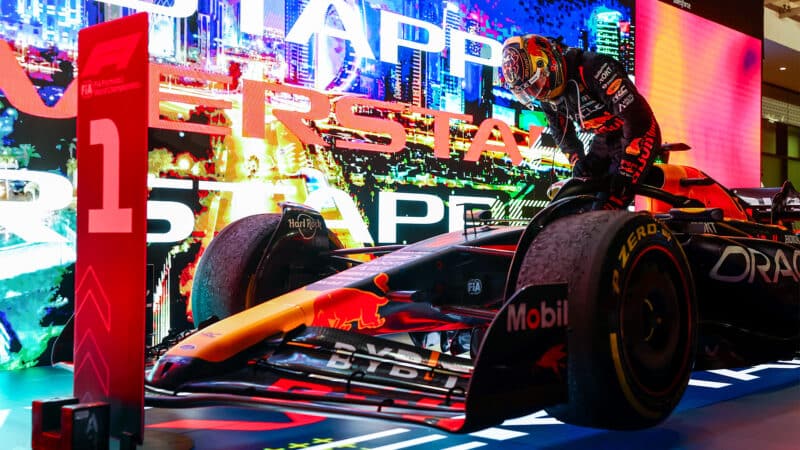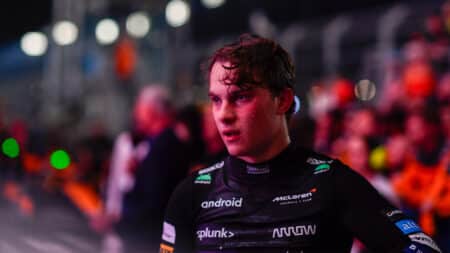The release was the first many had heard of an issue, including the teams who had not noticed anything when running on Friday, and there had been zero failures in the weekend up to that point. Pirelli’s stance was that there were only initial hints at a problem but it wanted to prevent anything more severe happening.
The drivers then found out through the media coverage of the statement, upsetting many GPDA members as the news was circulated in their WhatsApp group.
As Oscar Piastri put it, while it’s an issue that shouldn’t really have surfaced in the first place, the idea that preventative and proactive measures were being utilised rather than reactive ones is all that Pirelli and the FIA could do.
But amid rumours of an impending announcement regarding Pirelli’s extension as the sole tyre supplier to Formula 1, the timing also had some sceptical that the main aim was not to make the best decision for this race in particular but actually ensure there was less chance of a major issue coming up that would overshadow that news.
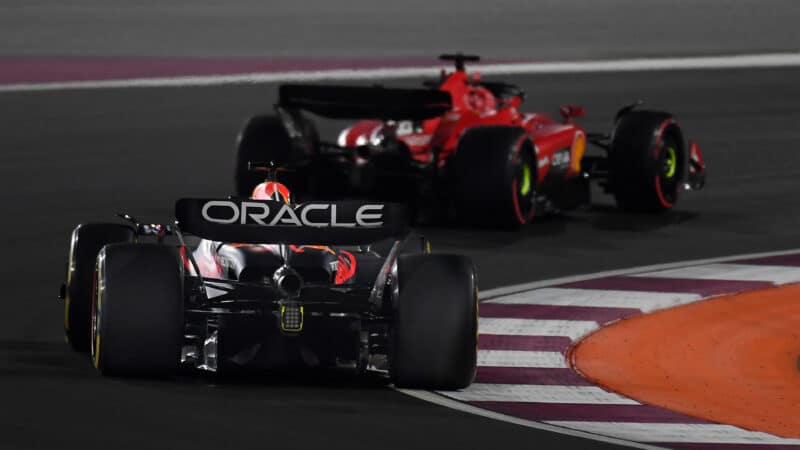
Running over kerbs were a bigger problem than usual in Qatar
Red Bull
Not quite a World Cup standard
The last time F1 was in Qatar it was understandable that certain aspects of the race were very different, because it was in 2021 when a one-off addition to the calendar was helping as the sport recovered from the COVID-19 pandemic.
There was little time for the venue to prepare, but the promise was of big changes when a 10-year contract would start in 2023, with the one-year gap so that Qatar could focus on delivering the FIFA World Cup.
Well, there was an impressive new pit and paddock complex, although areas of it were unfinished. But plenty of the organisation left a lot to be desired. It was always a fight to get in and out of the track, where in 40°C heat, shuttles would bus you past the paddock to drop-off points by empty car parks reserved for VIPs who were never going to materialise, and then require a further walk back in the opposite direction.

An upgraded paddock was enjoyed by the teams, but other Qatar visitors weren’t so lucky…
Grand Prix Photo
FOM members reported two-hour journeys trying to simply get into the track on the first day, while uninformed security — transferred to the event from World Cup duties — would regularly close access points or reject attempts to get to work.
A very media-specific issue was the media centre having air-con with just two settings: on and off. Off clearly wasn’t an option, but as ‘on’ was an arctic setting you were greeted at the welcome desk with a blanket to wrap yourself in to stay warm on two of the four days.
Inside the paddock was largely fine, but then F1 has a habit of living a sheltered life inside and thinking there are no issues. A banner that was right outside the entrance on Thursday congratulated labourers on achieving a number of “safe man-hours” — a nod to the criticism faced for workers rights on big construction projects in Qatar — while the disconnect between local life and the F1 world was highlighted when one team had to prevent a circuit worker walking out with a bottle of beer stolen from a fridge.
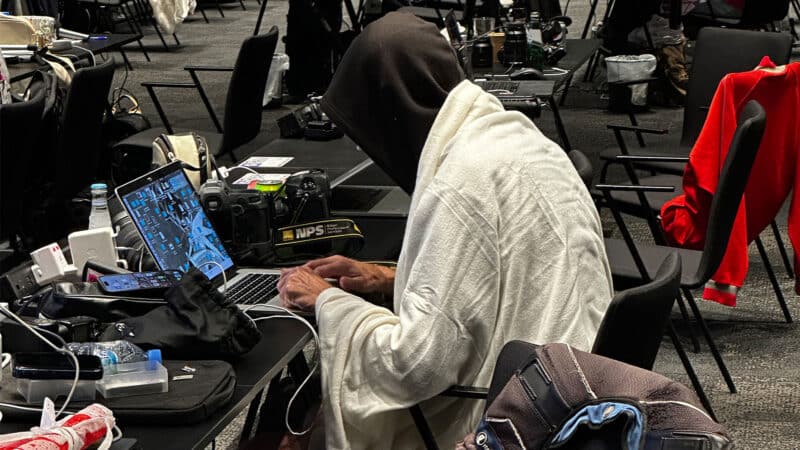
Ironically, journalists were provided with blankets to stay warm in the media centre
Grand Prix Photo
The heat is on
You might be getting a sense from this diary that things were far from perfect in Qatar this weekend, but dare I offer a defence of the venue after the unsavoury post-race scenes featuring multiple drivers? There are a number of factors that need taking into account.
The heat played a major part in terms of the drivers’ exhaustion, but so too did the above tyre issues that mandated maximum stint lengths and therefore led to qualifying-style laps throughout rather than any sort of race management. Drivers had no time to rest, and no way of cooling down.
It led to Logan Sargeant retiring, and Alex Albon and Lance Stroll in particular struggling to exit their cars and needing medical attention post-race. But all of the drivers were in difficulty, and said conditions were unsafe.
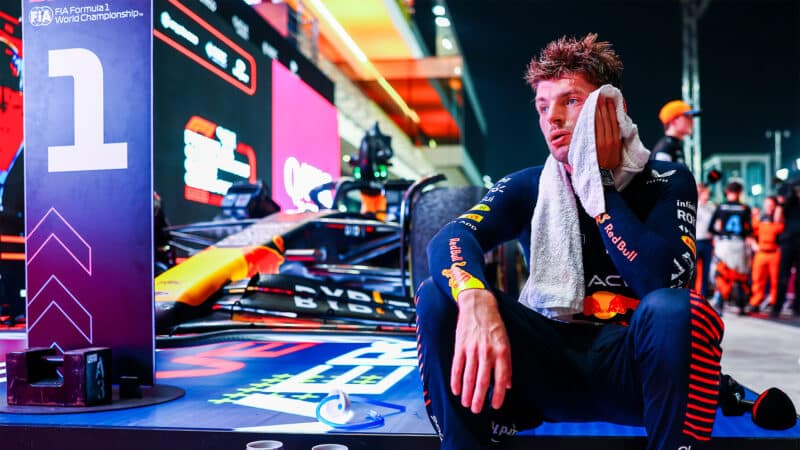
The Qatar GP was a ‘hellish’ race for many drivers
Red Bull
It was slightly hotter than it might have been — the monthly average high being 35°C but temperatures some 10°C hotter seen on some days — but next year’s visit is slated for the final days of November and first of December, when there’s a further 10°C drop in average highs.
But such conditions are not exactly unusual, and certainly not in early October, so F1 needs to learn the lesson that its calendar cannot just expand at any cost. Climate prevents racing in places like Texas in June alongside Canada, and just because there might be more money on the table from Middle Eastern venues, races still need to be held at a suitable time of year.
Lawson’s surprise call
Some lighter topics did raise their heads earlier in the weekend, though, and the first was the way Liam Lawson found out he was racing in Qatar. Daniel Ricciardo was spending time in the simulator to see if he could make a return from injury here or in Austin, and found he was around 90% of the way there but that it was pointless to rush.
Had Ricciardo tried to drive in FP1 in Qatar and then needed to revisit the plans, Lawson would have been thrown in for qualifying as it was a sprint weekend, so the decision was made that another two weeks would be the right way to time the Australian’s return. And he got to break the news to Lawson.
“I was sitting at lunch and had a random number call me and it was a FaceTime,” Lawson said. “So I was really confused because people don’t just FaceTime randomly so I answered it and it was just Daniel’s face and he basically said that he thought he’d let me have another weekend!”
But Ricciardo will be back in the United States to kick off a triple header, with AlphaTauri expecting no steering wheel changes or cockpit adaptations being required following his sim sessions.

Lawson has impressed in his F1 debut but had an off weekend in Qatar — finishing last
Red Bull
Andretti’s bid splits opinion
Sitting here now, Andretti’s hopes of getting a spot on the grid in future appear very slim. Formula One Management (FOM) is maintaining that it doesn’t want to expand, and rival teams understandably don’t want to give up any potential revenue.
But the way in which each team has been going about voicing its reasoning started to come under scrutiny, because unless they openly said “It’s about money”, their arguments were thin.
